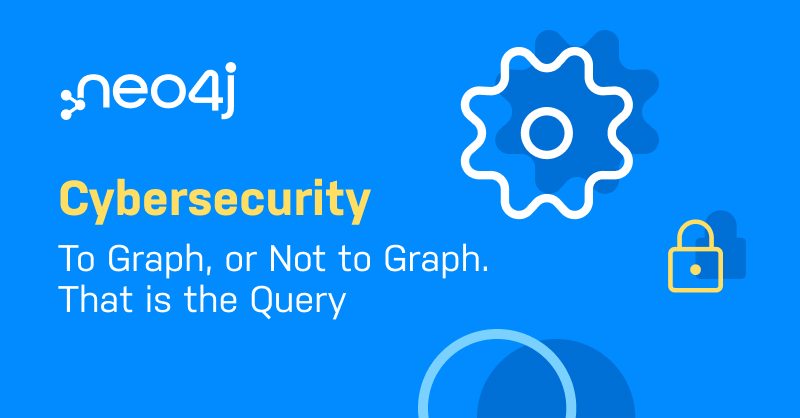 I think we can all agree that cybersecurity is one of today’s more acute concerns around the globe. After all, ransomware-related data leaks are up by 82 percent with a 40 percent overall increase in ransomware attacks during the pandemic. Identity theft increased by 42 percent in 2020 compared to 2019. The Healthcare industry spent $6 trillion due to security breaches. And 700 million records were exposed from one social media giant within 3 months in 2021.
I think we can all agree that cybersecurity is one of today’s more acute concerns around the globe. After all, ransomware-related data leaks are up by 82 percent with a 40 percent overall increase in ransomware attacks during the pandemic. Identity theft increased by 42 percent in 2020 compared to 2019. The Healthcare industry spent $6 trillion due to security breaches. And 700 million records were exposed from one social media giant within 3 months in 2021. These statistics are alarming. But thankfully, technology is evolving to meet a universal demand to combat these cyber adversaries. And graph technology is emerging as a defensive leader.
Neo4j, the world’s most secure, performant, and scalable graph database, is helping organizations all over the world to connect – and protect – data to identify vulnerabilities, analyze network health, and visualize its unpredictable patterns.
Our last Connections event was focused exclusively on this topic.
Cybersecurity: Combating Modern Threats with Graph Databases featured graph database thought-leaders and leading organizations sharing their insight and deep practical experiences about graph technology and the role it plays in cybersecurity. Whether you’re a developer, a security professional, a tech leader looking to create value from your data relationships, or just interested in learning more about graph technology, this event has something for everyone.
And if you missed it when it was live, fear not – we’ve archived all of the video sessions so you can tap into the experts whenever you want.
Here’s what we covered.
Keynote: Cyber Threats and Resiliency Landscapes
Dr. Jim Webber, Chief Scientist, Neo4jIn his keynote session, Dr. Jim Webber gives us an overview of the current cybersecurity landscape and discusses how one can think like a cyber attacker to mitigate risks while leveraging the power of Graph Data Science. This is a good place to start, but don’t stop there.
Watch This Session
Digital Twinning the Cloud for DevSecOps
Hays Hutton, Principal Cloud Architect, Palo Alto NetworksThe Cloud is a very complex system. It strains security and operations with the volume and velocity of data. Project Gemini, an internal tool at Palo Alto Networks, created a digital twin to tame the complexity of big systems. In this talk, we will review the architecture and some of the use cases that are made possible with a digital twin of a very large Google Cloud Platform implementation built on Neo4j.
Watch This Session
The Role of Graphs in Cybersecurity
Xander Smart, Enterprise Account Executive, Neo4jOrganizations worldwide are leveraging the power of graph data platforms, helping them assess the risk and cybersecurity threats they potentially face accurately. In the battle for more robust cybersecurity, organizations need to know how their enemies may try to compromise and move their network.
Watch This Session
The CI/CD Graph: An Attackers Perspective
Leon Goldberg, Chief Architect, Cider SecurityCI/CD environments and processes are becoming a key area of focus for both hackers and defenders. However, truly visualizing the attack surface has become a complex engineering task. This talk will walk you through how we created an improved CI/CD graph model to provide greater control and defense mechanisms for the most central part of today’s engineering organizations.
Watch This Session
Graph-Based Threat Modeling, Security Analytics, and Threat Hunting
Ashkan Rahimian, Cyber AI Senior Manager of Cyber Emerging Technologies, DeloitteEgor Burnashev, Cybersecurity SME Risk Advisory, Deloitte Canada
Learn about connectivity and reachability graphs based on ACL rules, as well as critical asset discovery and tracking and exploratory threat hunting. We will also explore a vulnerability chain and attack path analysis.
Watch This Session
From Cyber Events to Cyber Stories
Nariman Mammadli, Director & AI Architect Joint Security Operations Center, Royal Bank of CanadaIn the Joint Security Operations Center at RBC, we build AI algorithms to detect threat signals in large datasets. The challenge is to integrate outputs from these algorithms to retrieve the whole cyber risk narrative. We use the Neo4j graph database to construct a network of high-risk cyber events around entities using the output from AI detections.
Watch This Session
Modeling Cybersecurity with Neo4j, Based on Real-Life Data Insights
Gal Bello, Sr. Field Engineer, Neo4jTo wrap up this half day virtual event, Neo4j’s Gal Bello will share many real-life insights on cybersecurity, and will present how graph databases can assist with solving these cases.
Watch This Session
Check Out Neo4j’s Connections



